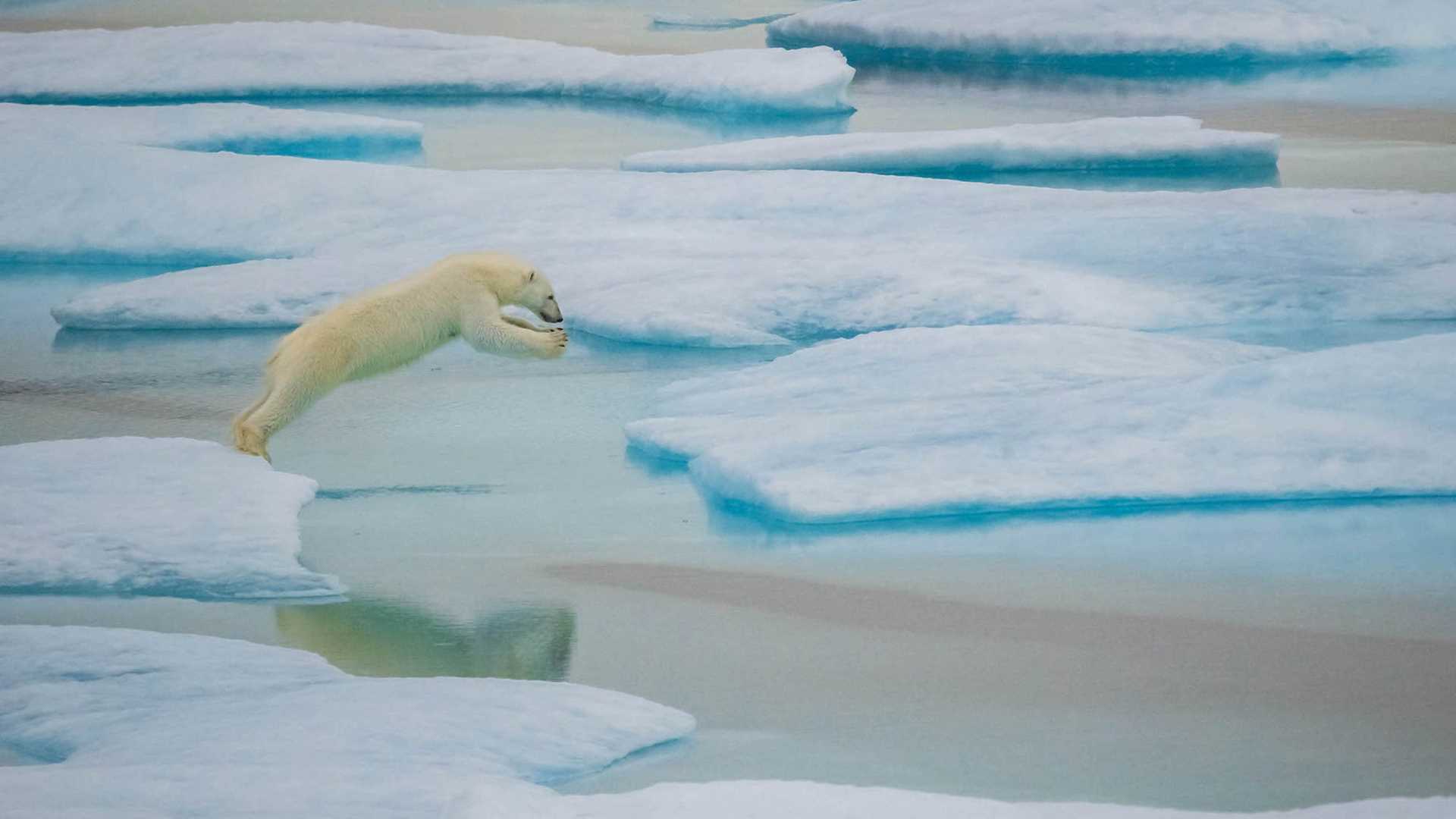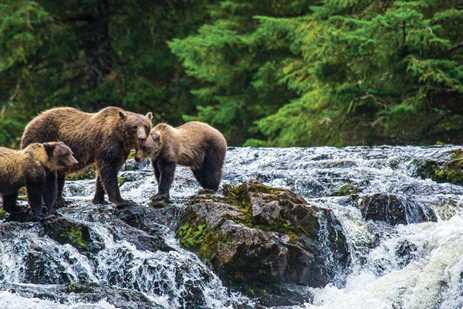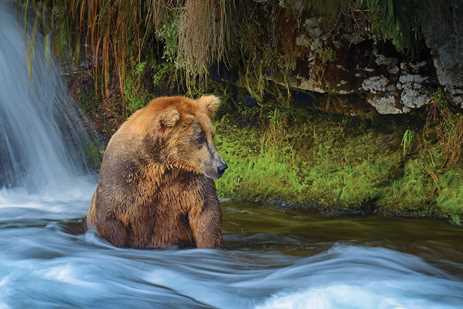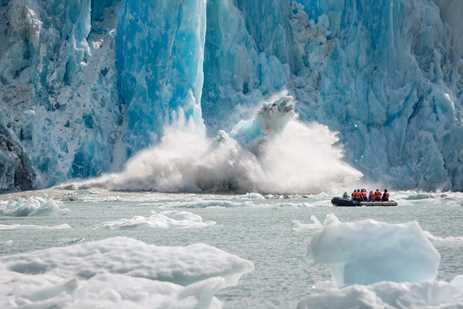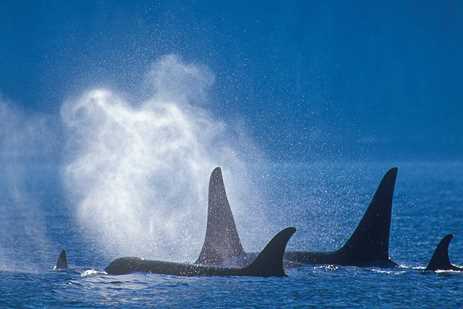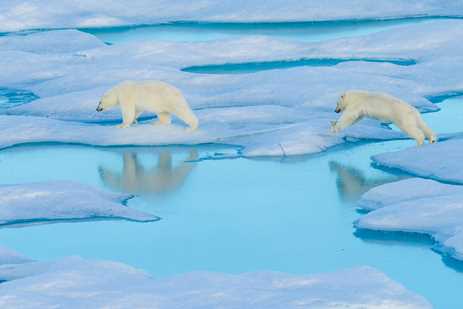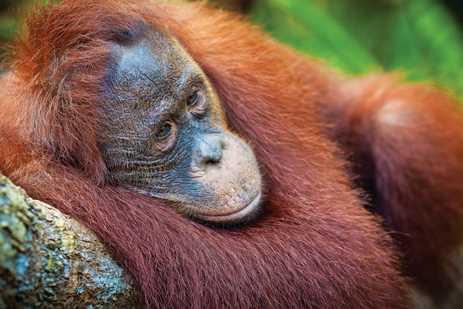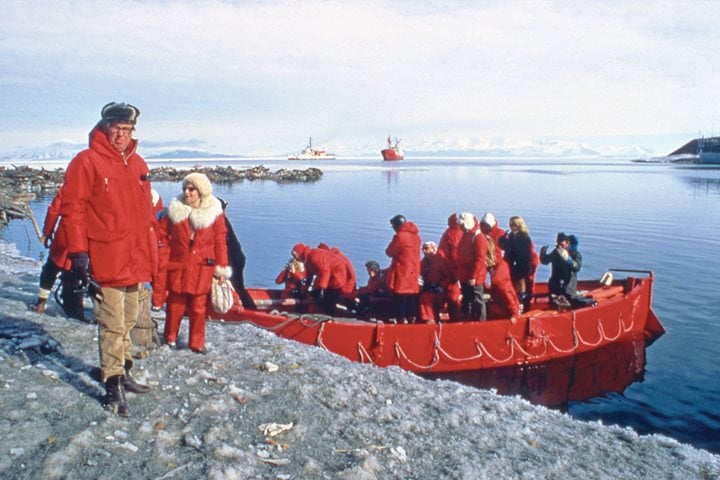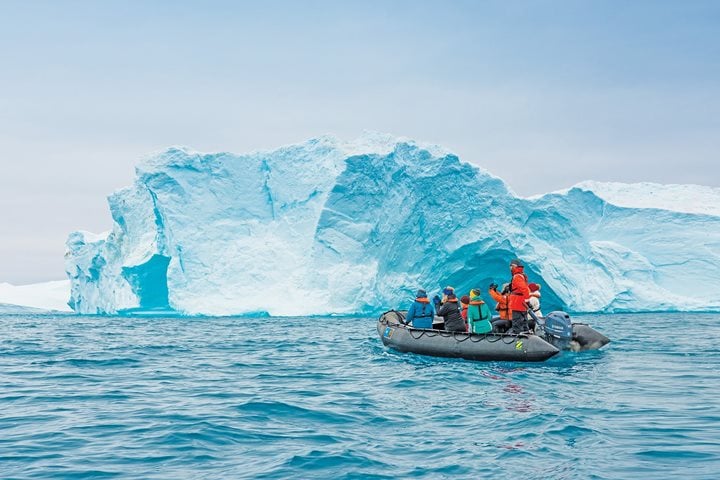Grizzly Bear
Scientific Name: Ursus arctos horriblis
Habitat: North America, Europe, Alaska, Canada
Size: 5 to 8 feet long; 400 to 700 pounds
Diet: Omnivore
Life Expectancy: 20 to 25 years
Closely related to the brown bear, grizzly bears are a subspecies whose main differentiator is location. Grizzlies can be found in the interior of Alaska where they forage among the forests, fields, and streams for grasses, roots, berries, worms, and ants, as well as hunt for a range of prey from trout to squirrels to larger animals like elk.
Slightly lighter in color than their coastal cousins, their white tipped fur gives them a "grizzled" look, the source of their name. Also like a brown bear, grizzlies have a distingushable large shoulder hump, the result of a mass of muscles that give the bears additional strength both for digging and hunting. These communicative bears use a range of sounds, including grunts, growls, and moans, to converse with their young or potential mates and they rub their bodies on trees to alert other bears to their presence.
View Alaska Itineraries >

